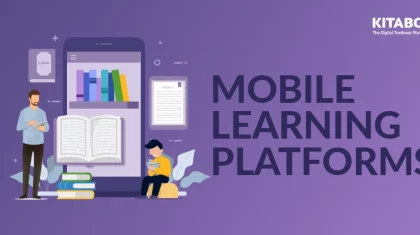
How Online Assessment Tools Can Streamline Grading for Teachers
Summarize this blog with your favorite AI:
As education moves online, all the associated processes must also be reinvented to help teachers streamline the backstage processes. Assessments are a labor-intensive process that requires teachers to create multiple copies and versions of an assignment, distribute them, gather and evaluate them, and then create records of student progress.
Automating the assessment process allows teachers to focus on teaching and leave grading to AI-powered assessment software. AI-powered grading tools have been shown to reduce assessment grading time by as much as 70%.
This blog summarizes how online assessment tools for teachers help them streamline the grading process.
Table of Contents:
I. What are Online Assessment Tools for Teachers?
II. How Online Assessment Tools for Teachers Streamline Grading
What are Online Assessment Tools for Teachers?
Digital assessment tools are AI-powered software or platforms that empower teachers to create, administer, and evaluate assessments online. They help teachers efficiently distribute content such as quizzes, surveys, and assignments over cloud-based digital platforms, enabling them to assess students’ understanding of concepts in real-time.
Teachers can create a variety of assessment types, get real-time feedback, and enhance accessibility to assessment resources for students using a single platform. These tools also facilitate data analysis to highlight student performance and progress through a course.
Some excellent examples of eLearning assessment tools are KITABOO, Kahoot!, and Socrative.
How Online Assessment Tools for Teachers Streamline Grading
There are 8 crucial ways in which virtual classroom assessment tools can help teachers streamline the grading process from end to end:
1. Automated Grading
AI-powered digital assessment tools can automatically grade multiple choice type questions, fill in the blanks, true/false questions, and flash quizzes. It reduces the time teachers have to spend repetitively grading each assessment.
AI-powered assessment tools:
- Improve grading efficiency by handling huge volumes of student assessments within minutes.
- Maintain grading consistency by analyzing patterns in student responses, minimizing human error, and eliminating subjective bias.
- AI tools can scale up the grading process as needed, depending on the number of students taking an assessment.
2. Consistent and Objective Feedback
AI-powered online assessment software ensures unbiased feedback to students. These tools use complex algorithms to assess student responses for correctness and accuracy, eliminating the risk of bias during evaluations. All assessments are graded based on pre-specified, uniform standards that promote fairness and equity.
According to recent studies, AI-powered tools offer tremendous accuracy in grading tests. They help eliminate inconsistencies and biases in evaluation, providing students with equitable competition and leveled ground to compete.
3. Immediate Results and Feedback
Studies show that immediate feedback helps students learn better than when they receive delayed feedback.
Digital processes are nearly instantaneous, delivering immediate feedback to students after their assignments are complete. Sometimes, the feedback is configured in real time to help students fix errors as they progress through a module. It reduces the waiting time for students to receive performance feedback.
Instant feedback also enhances student engagement and motivation levels.
4. Scalability
Digital assessment tools are designed to handle evaluations on a large scale. Whether teachers grade the assessments of a single classroom or a whole semester, these tools can handle thousands of assignments simultaneously. This helps teachers ensure timely feedback, even for larger batches.
Some tools, like KITABOO, are designed to scale up or down according to the institution’s requirements without compromising grading efficiency. Furthermore, it is cost-effective to use software for grading instead of hiring temporary staff to meet the needs.
5. Natural Language Processing (NLP)
NLP enables AI-powered digital assessment tools to grade written work for content, structure, grammar, and coherence. For example, these tools can grade essays and written assignments fairly.
Studies highlight that NLP models can evaluate students’ conceptual understanding of short-answer type questions with 95% accuracy.
Teachers can save time reading and grading essays and written responses by deploying NLP-powered assessment tools.
6. Personalized Learning
AI-driven assessments tailor feedback to individual student needs, helping teachers deliver personalized support and guidance.
AI-enhanced personalized feedback helps students better understand their strengths and weaknesses, highlighting areas for improvement. It also helps enhance engagement and motivation to improve and score better in the next iteration.
Personalized feedback and support boost students’ learning experience and help them achieve better academic outcomes with each assessment.
7. Data-Driven Insights
AI-powered digital assessment tools gather student data before, during, and after assessments, creating patterns and understanding their responses. These insights help educators identify where students need improvement.
Based on performance analytics, teachers can adjust their teaching strategies to address the specific needs of their students. Predictive analytics can help teachers predict student outcomes based on historical data. Teachers can initiate early interventions for high-risk students and help them get better outcomes.
8. Enhanced Instructor Effectiveness
Online assessment software automates routine tasks such as distributing assessments, collecting them, evaluating them, and generating feedback and reports on student performance.
This makes more time available for instructors to plan the curriculum, gather resources, and create learning materials for students, enhancing the effectiveness of their lessons and courses. Teachers are able to devote more attention to engaging students in the classroom and paying better attention to special needs students.
Making Online Grading Easier: KITABOO
Digital assessment tools equip teachers with new opportunities by automating repetitive grading and generating time for them to explore new educational techniques. Platforms like KITABOO offer teachers analytics modules that help them track content consumption, identify actionable patterns, and leverage data-driven insights to improve student outcomes.
KITABOO helps teachers detect at-risk learners by analyzing performance data and introducing timely interventions to improve their performance. The platform also offers formative assessment and feedback capabilities to expand the scope of digital evaluation available to teachers.
To explore more features of the KITABOO digital publishing platform, get in touch with the team today!
Also Check:
Discover how a mobile-first training platform can help your organization.
KITABOO is a cloud-based platform to create, deliver & track mobile-first interactive training content.



